“Strive to find the best tone, the best thing, the best everything": Trivium’s Matt Heafy checks in to talk gear
Why he torched black metal’s rulebook with Ibaraki and the tantalising musical potential of his signature Epiphone Les Paul Customs
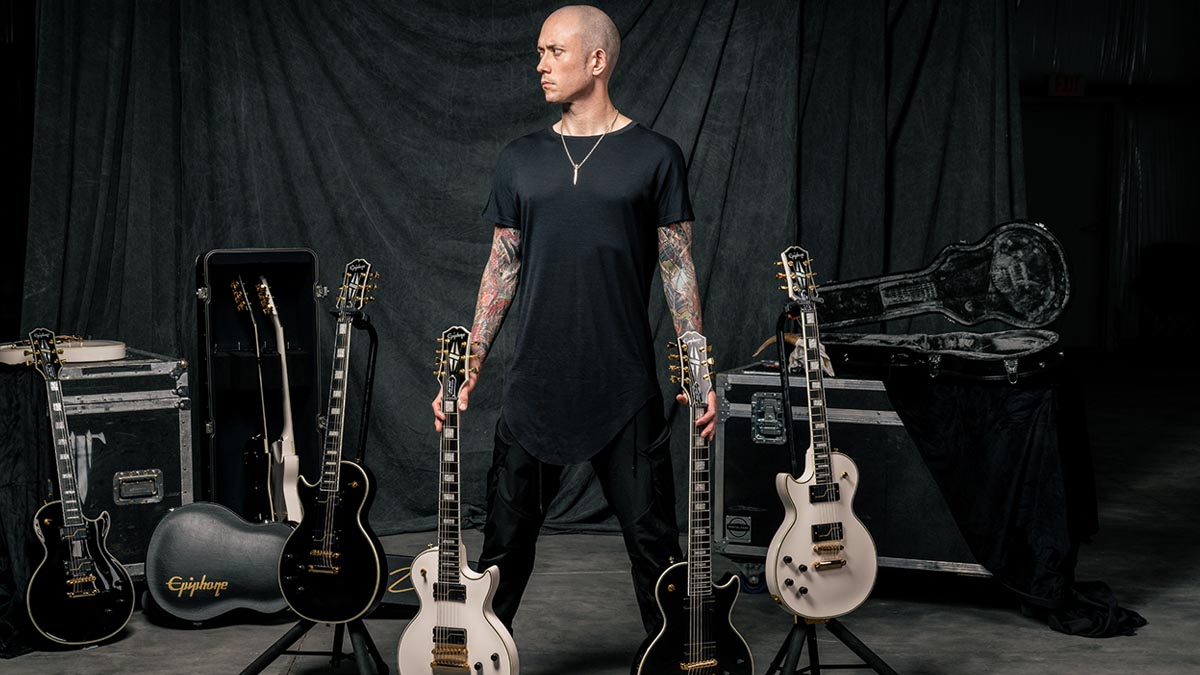
There’s a scene in Stanley Kubrick’s Full Metal Jacket where Matthew Modine’s Private Joker is being upbraided by Bruce Boa’s Pogue Colonel for wearing a peace button on a helmet besides the words ‘Born to kill’.
“What’s that supposed to be, some kind of sick joke?,” the colonel asks. “I think I was trying to suggest something about the duality of man, sir,” comes Joker's reply. “The duality of man. The Jungian thing, sir.”
Maybe there’s something similar going on with Matt Heafy and his signature Epiphone Les Paul Custom.
The Trivium frontman has always been drawn to the Les Paul Custom – the grandest LP variant of all, the iconic singlecut electric guitar gussied up in a tux. It’s the guitar that made Frampton come alive, championed by Robby Krieger of the Doors, Jimmy Page, Jimi Hendrix, Robert Fripp.
But it sure wasn't designed to split the atom with a contemporary metal sound that leans heavily into post-Bay Area thrash, groove and black metal, metalcore and all that non-jazz. For Heafy, however, it works a treat for his technically adroit approach; with his custom spec, the Les Paul Custom is born to kill.
Speaking to MusicRadar in 2017, he explained how the Les Paul Custom was his first love, and would soon underpin Trivium’s sound, becoming his go-to in the studio.
“My favourite guitar was one my dad gave me when I was 11 years old. He gave me a Les Paul Custom, which is an absurd thing for an 11 year old to get for their first guitar,” he said. “I played it on most of our records, and it was always my favourite.”
Get the MusicRadar Newsletter
Want all the hottest music and gear news, reviews, deals, features and more, direct to your inbox? Sign up here.
I was a champion of listening to satanic black metal but also listening to christian metalcore at the same time, or being into death metal and at the same time emo, things that shouldn’t go
When it came to spec’ing up a signature guitar with Epiphone, it could only be a Les Paul Custom. Now, in his third artist collaboration with Epiphone, the Matt Heafy Les Paul Custom Origins Collection, Heafy augments the classic design further, deploying a pair of Fishman Fluence Modern, a custom neck profile with a sculpted heel, and indeed offering this artist spec on both six and seven-string models, with left-handers available.
And yet, for all this is shreddable “made for metal” update, the guitars themselves – finished in Ebony or Bone White – retain that old-world charm. They are not so far aesthetically removed from the originals.
Sure, there are knurled metal control knobs instead of the more commonly found Gibson ‘speed knobs’ and there is no poker chip washer on the three-way pickup selector, but these don’t look like your common or garden metal guitar.
“I have always liked juxtapositions, opposing forces on the same thing,” Heafy says. “Everything I have ever done has kind of been like that, and it’s only later in my life that I have been recognising that. The Les Paul has been the iconic classic guitar; it has never really been the modern metal guitar – well maybe heavy metal, a classic kind of metal.
“Not just to be different, but I like to see what else there is, what else I can create, or what else I can make out of thin air. Or what other elements that maybe haven’t been combined already but I can.”
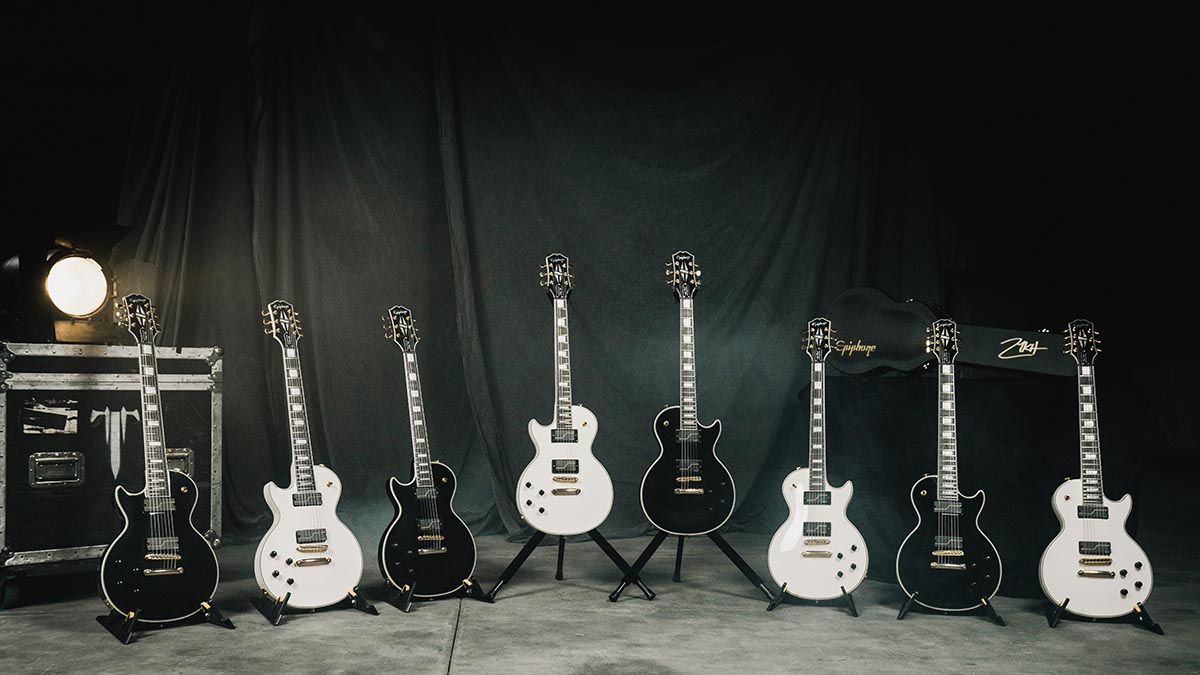
As Heafy explains here, that search for contrasts, for balance between contradictory elements, has been a guiding principal for his career with Trivium his black metal project Ibaraki, and as a guitar player.
“I was a champion of listening to satanic black metal but also listening to christian metalcore at the same time, or being into death metal and at the same time emo, things that shouldn’t go,” he says. “It’s the same thing with my Ibaraki project; having the guy from Trivium and the guy from My Chemical Romance doing a black metal song, that is extraordinarily unique and intense, and it is a song that lyrically is quintessentially is the opposite of a black metal standpoint.
Sometimes, he says, you’ve just got to seek out something different. You might just find yourself along the way.
We were talking about the contrast between the classic design of the Les Paul Custom and the modernisation on your signature models. But it’s a philosophy. To navigate a complex world, you have to embrace the paradoxical.
“Absolutely, I feel like people, maybe in the creative fields, in music, they are going too hard trying to make something that they think is what people want. They are creating something in order to appease what they think a focus group says, whereas everything that we do, and always have done with Trivium, is make the kind of music that – not to sound selfish – we want to hear first and foremost, not thinking about whether people are going to like it.
“Take Ibaraki. I made that record entirely for myself, the music I wanted to hear, the music that I wanted to make that maybe did or didn’t exist, and that’s all that mattered. If anyone liked it, that’s a bonus. With the guitar, with the concept of the Origins [Collection], I have always for some reason gravitated towards the Les Paul Custom, but I wanted these subtle changes.”
This is your third collaboration with Epiphone – you have always made a point of championing the brand.
“I know our fans’ age range. The majority are probably 18 to mid-30s, and of course there are some outside of those bounds, massively, but I wanted to make something that could be attainable by most people, so they can have the same tools to create as I use.
“That goes back to a different philosophy that I live by – no one is above anyone else in this world, no one is better than anyone else in the world, at anything, professionally or in status.
“I wanted to have the same guitar from the factory that is the same one that is in the stores. I guess there are lots of these larger existential concepts that are becoming more apparent to me the longer I do this.”
There is also purely materialist reason to go with Epiphone; the quality is great. We’ve played Epiphones that play and sound better than some Gibsons. Ultimately, it is just how the instrument speaks to you.
“That’s awesome. There is never a right or wrong answer with gear. I feel that so much of the music world, people – myself included – will strive to find the best tone, the best thing, the best everything, but whatever works for musicians is correct.
There is never a right or wrong answer with gear
“If it is a 200 dollar plastic guitar that’s terrible but they feel really good on, that they feel good to make music on, they should absolutely do it. That’s the right answer. If it is some really expensive boutique guitar that they got from selling their car and they love this guitar, and it makes them feel like the best guitar player in the world, then that’s the correct answer as well.
“I do want people going into it, trying my guitar, and if it is for them, awesome, and if it’s not then they might have to go elsewhere and find something that is correct for them. It is so subjective and there are so many pieces that are involved with tone.”
Also, it can simply come down to the room in which you are playing and how it resonates and makes everything sound better. There’s a spiritual element to making music that maybe is more important than the gear.
“Absolutely. The mood and the vibe for the player, and how you are feeling, and if you are feeling comfortable definitely matters. I always think back to sitting on a park bench in Copenhagen, in 2017, and it was a beautiful day. I was sitting there and I wrote the riff to Into The Mouth Of Hell We March.
“It is the matter of that – exactly what you said – that spiritual aspect of music. There is the right-side brain of, ‘You need to practise, you need gear that’s working, strings need to feel right and not be too high, the intonation has to be right, you know what techniques you are playing’.
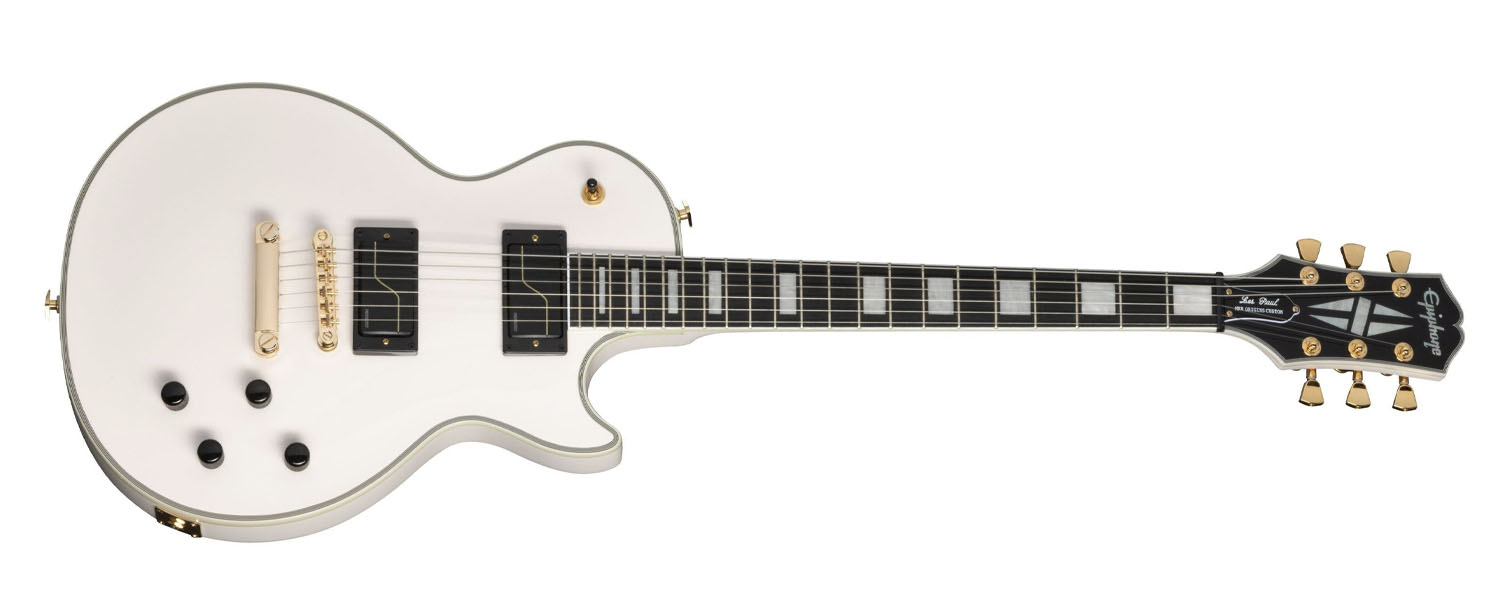
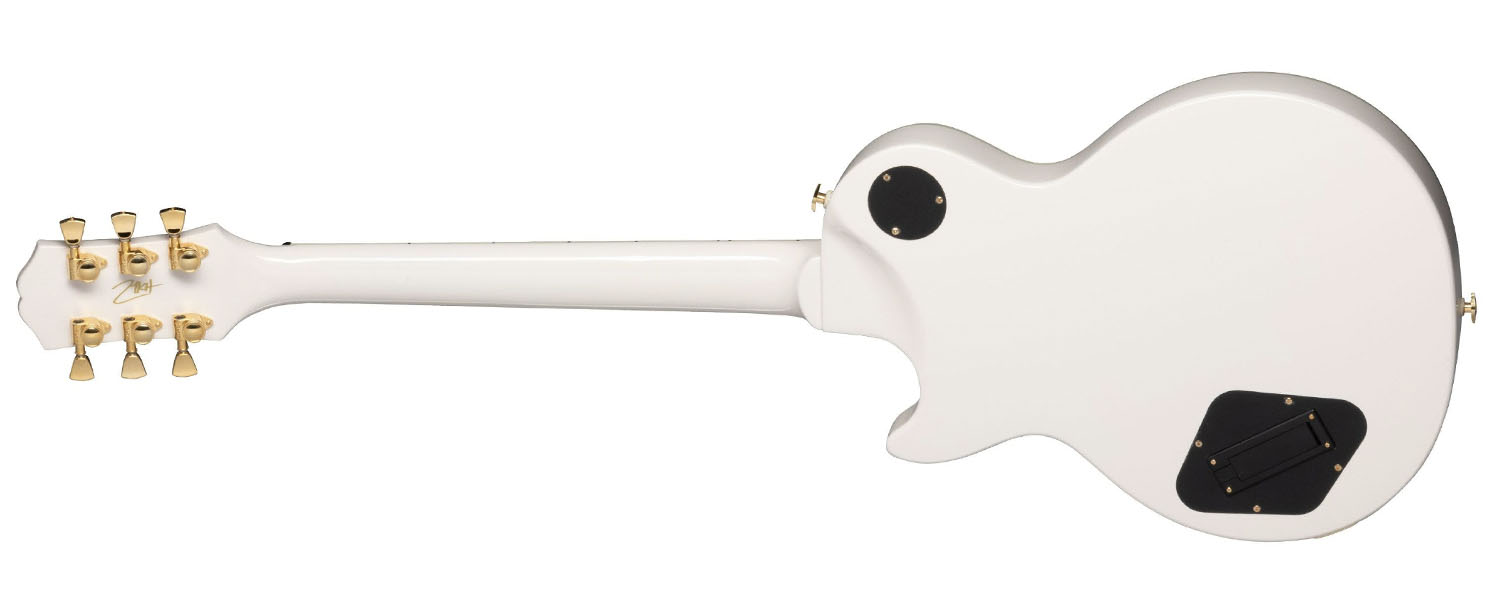
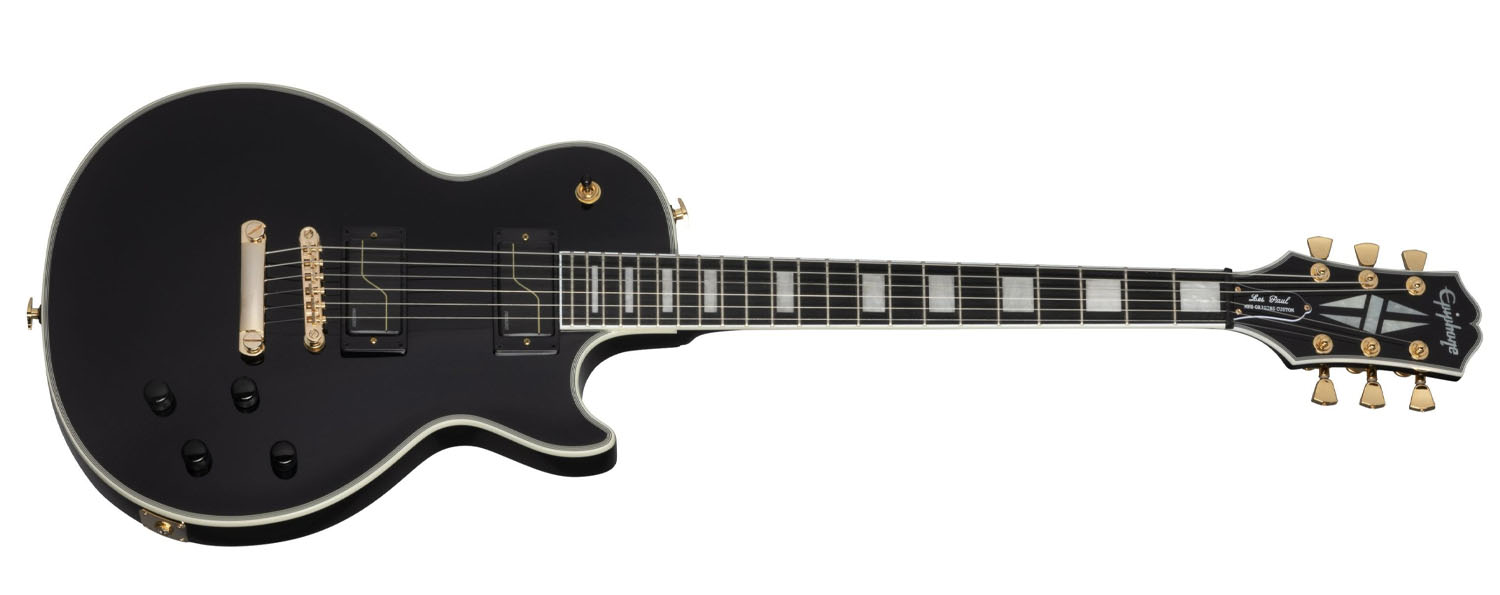
“But part of it is also left-side brain, being able to improvise, to play, and not worry about ‘Am I getting better? Is this the right way to practise this? Is this in key? Is this sticking to traditions of musical theory? Am I as good as anyone else?’ It is just playing. It’s just having fun and not thinking.”
“It’s those moments where you come out of them and you go, ‘Wow! I lost track of time. I forget where I was for a moment.’ You almost float above yourself for a moment. That is what I strive for, and I don’t always find it.”
I went back to real heads and real cabs because that brings you back to a place of being a teenager and playing for the first time
Of course, writing and creative ideas are often about fishing around for the inspiration. If inspiration was always there it would be too easy.
“When I do, and I come to out of that moment where I capture that lightning bolt, I try to record that riff immediately, or try to memorise that feeling, or try to write down what piece of gear I just played, what food I just ate.
“All the right-brain tactic and techniques are important – that I have the correct posture, that I am in the right position when playing – but it is also important to abandon all of that to put in the work and truly create, and that is when Trivium makes the best songs, when Ibaraki makes the best songs.”
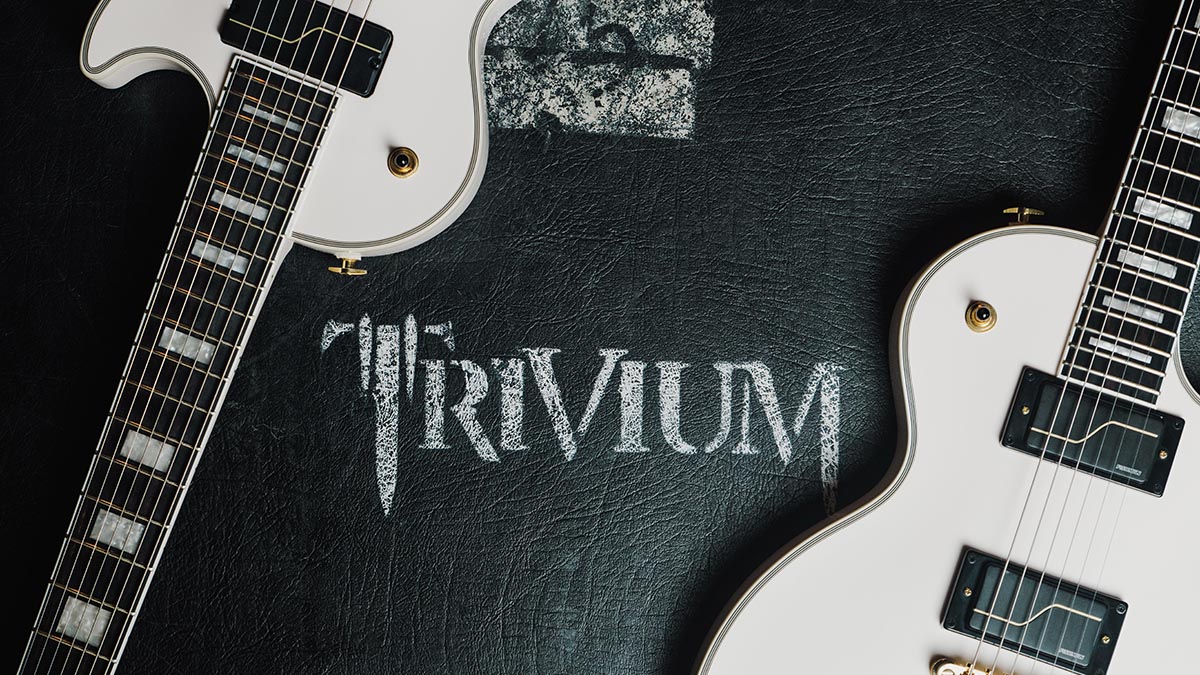
Those moments can come unannounced and take you by surprise.
“That actually happened to me last night. Cesar [Gueikian] at Gibson took me to his place and let me play through his Gibson collection. He had all these originals, ‘58s, ’57 Goldtops, ‘70s Silverbursts, and just all this stuff from the ‘60s and ‘70s – mind-blowing gear – and he was just letting me cycle through some of his favourite guitars and then the next thing I knew two hours just flew by.
“I told Cesar and everyone in the room, ‘I haven’t experienced this since I was 16 and going to a music store, and just playing guitars.’ That was a special thing. I hope that it happens for people with my guitar, or for people with any new piece of gear, any guitar, that they can achieve that moment, and just be lost inside of the moment and have fun and be creative.”
That feeling when you stop playing and come to and realise your face is really hot.
“Yes! Like my entire body! My flannel and and my jacket, I didn’t even realise, but I was totally sweating.”
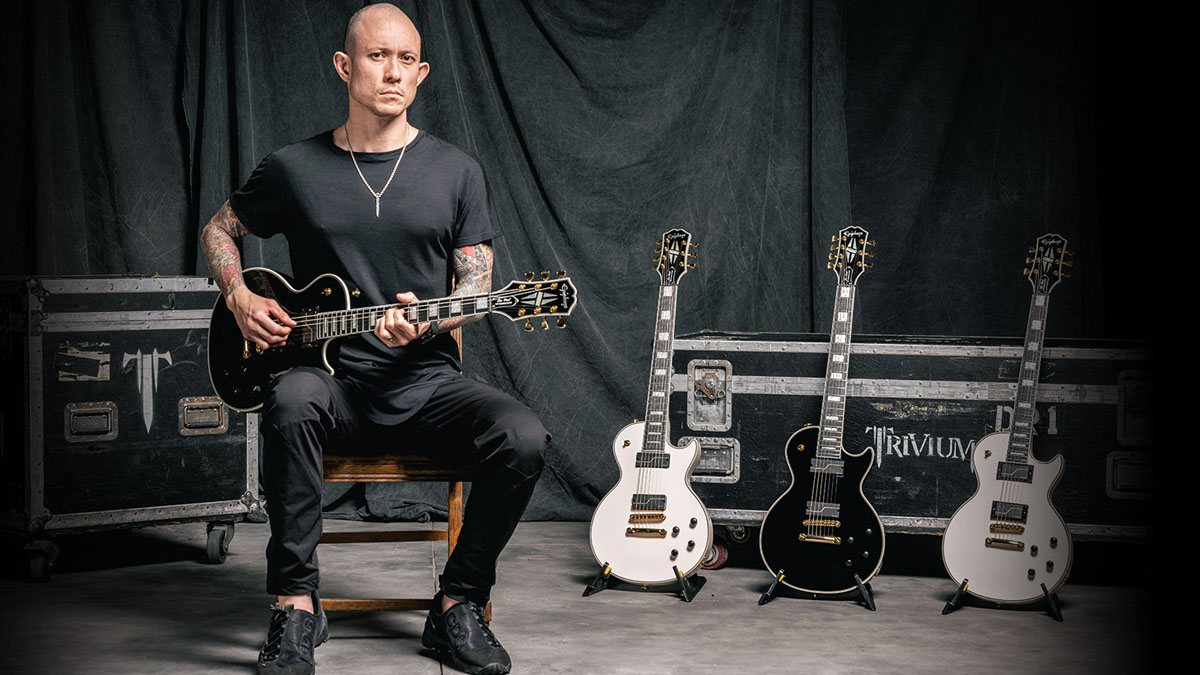
It’s hard to be suave and collected after you have a moment like that. It makes awkward teenagers of us all. When presented with these vintage instruments, what did you play?
“I just freely played. There was some Trivium riffs in there but it was mostly creating stuff and, actually, I wrote a riff that I really liked and I am going to make sure that I record today. It was a lot of playing off pf the feel.
“That’s why I went back to real heads and real cabs because that brings you back to a place of being a teenager and playing for the first time, and feeling the actual pulse, that organic push against you from the cab and from the head. From the gear and from the guitar, to be able to feel that resonation, that response, and that percussive attack.
“But yeah, it was just playing and freely creating and I still have that riff in my head and I am going to make sure I record that.”
Recording all these ideas as soon as they come to you is a good habit to be in.
“Definitely, and I always encourage musicians and guitar players, or anyone who wants to get into songwriting to do that. I can never sit down and say, ‘It’s time to write a song that sounds like this, this or that.’ That’s when it ends up being forced and difficult. But instead I just need to let the song appear, and then I need to capture that song.”
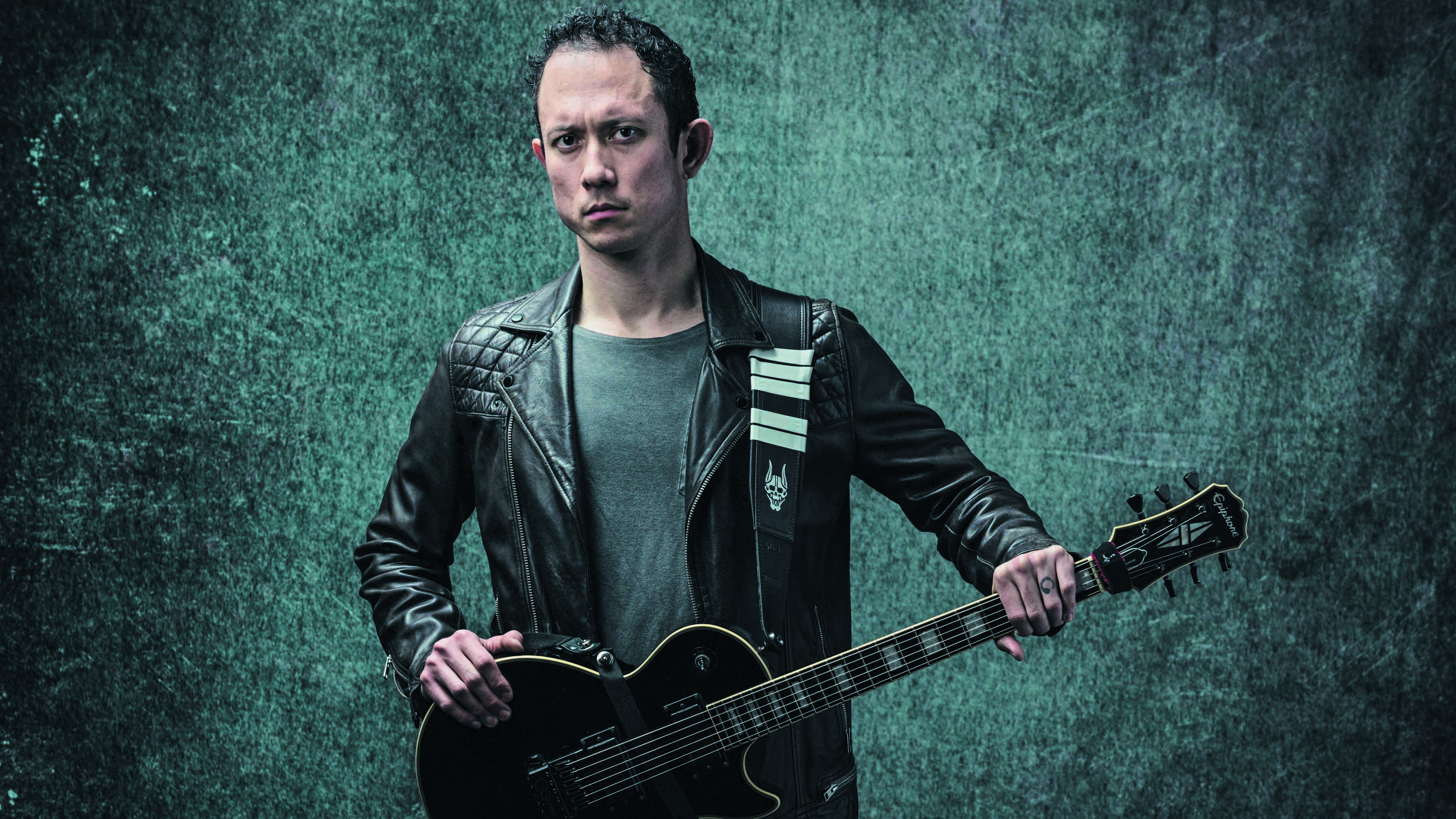
Matt Heafy interview: "I practise to be as good as Bruce Dickinson, Freddie Mercury and John Petrucci, knowing it won’t happen, and work to be in the biggest band in the world knowing it might not happen"
It’s interesting that you went back to real amps and real cabs. Because you had been using the Kemper Profiler live. But like you describe it, the experience of playing guitar, with volume, is almost epicurean.
“Yeah, it is. We still love the Kempers so much. I can’t remember what record it was – it might have been on Dead Men [What The Dead Men Say] – but Corey was mentioning to me how he had set a cab back up in his house with a head and how good that felt to play, and I was like, ‘I guess I haven’t been doing that.’
“The last several records we had done, we had recorded them with DI tracks with a great Kemper tone – and I am not picking on the Kempers; Kempers are absolutely amazing – and we would not get the final tone until we were mixing. So this time around we thought, ‘Let’s get close to the final tone before we mix the record.’
“I would play with these head and cabs, and the thing that I noticed it was like zero-latency playing. And I am not saying that there is latency in modelling or VSTs or plugin software but for me, feeling that true attack, that true vibe and sound from tubes into a speaker, it makes my playing feel much more organic.
“I feel like I am really locked into the music because I can actually not just hear but feel what I am doing, and it is not just the PA resonating but the cab behind me. It takes me back to being 12 or 14 years old, Trivium being in a garage or in one of our bedrooms, and playing like that.
“I think that that nostalgia or that organic feeling of that percussive attack and resonant response from me striking a note and feeling the energy of that note… It’s more than just hearing it. I can’t pinpoint it but I can say that it takes me back to the first time I fell in love with playing guitar.”
Anything that takes you back to that sense of pure joy and clarity is always a great thing. Some things just give you that feeling, like the clunk you hear and feel when putting a quarter-inch cable into the front of a guitar amp.
“Yeah! [Laughs] I totally agree. I totally agree. I felt that little upgrade at first with modellers when I switched to Fishman pickups because it was like, ‘Wow! It feels like I am playing more in time.’ There was no lag from me striking the string, the pickup responding, and the sound from the amp. And I was like, ‘How can it be any less [lag]?’ And that is when I went back to heads and cabs, and I found that that was the most zero-latency [experience].
“Of course, zero-latency is not something anybody thought about when they first built amps but us living in the computer world that is what it feels like, like I am at the lowest latency possible with the response when I strike it. There is really no quicker way for me than playing through a head and a cab.”
There are some amps that feel faster than others. Some feel immediate. What is in your rig now then?
“Yes, definitely. Currently we are using my signature Epiphones – six and seven-strings, black and white – with Fishman custom pickups. We are actually about to launch Dunlop Trivium strings, the same gauge that Corey and I have used forever. I use my Dunlop Jazz IIIs, which are like my custom picks, color and grips, Gruv Gear FretWraps.
I feel like a player can tell whether it is a head or it is modelling
“I have a lot of custom stuff; I’m like a bootleg Kiss. I’ve got all that signature gear then that goes into a six-band EQ, the KHDK overdrive/clean boost, into a noise gate, and that goes into a 5150 III Stealth head, which in my humble opinion is the greatest of all 5150s. I have collected 5150s. I have two 6505+, tried all the different wattages, but a 5150 II Stealth 6L6 is the best for what I need. That goes into EVH cabs, and that is what we are using now.
“Live, we are all use the [Two Notes] Torpedo Captor X, so what is going to the crowd’s ears is going to the PA, and it is the head into the Captor, with all our customised IRs, that is going to the PA, and then onstage we have our live cabs behind us so basically anyone who is in the front of the crowd and us onstage will hear it from the cabs. Everyone else will hear the head through the PA via the Captor.”
That Captor is an excellent piece of kit.
“It is. It’s amazing. I have talked to several producers and asked them at what stage of tone does it make the most sense for something to be modelled – should it be the head, the cab, the miking? And the producers I have spoken to have all said that when you are making records the one thing you almost can’t tell is the cab sim and a real cab with a mic. It is so close nowadays.
“However, the head is something that the audience can’t tell at the show but I feel like it is something that the player can. I feel like a player can tell whether it is a head or it is modelling. Of course, it is important for the crowd – they are the ones you have got to please the most – but a musician knows whether it is the head or it is modelling.”
Why did you switch from EMG to Fishman electric guitar pickups?
“I have always loved EMGs. I have nothing but great things to say about them. But it was just that, when I finally did switch over to the Fishman Fluence Moderns, it was a latency thing I first noticed. It is probably proven that they have the exact same attack time with Fishman and EMG but for me, maybe it was the way that the EMG on my Les Paul versus the Fishman on my Les Paul and how it was set up, but all of a sudden my strikes were perfectly on with the click, perfectly on with Alex [Bent, Trivium’s drummer].
“Specifically, the part that I noticed, ‘Huh, I am wavering over the place with timing.’ I am a fine leader guitar player but I know I am a very good rhythm player, so I thought this is odd. It was the verse of The Sin And The Sentence [hums riff]. When it is played on the Fishmans versus the EMGs I could hear myself better.
“EMGs are frickin’ awesome. If you use them and you love them keep using them, keep loving them; you’ve got to find what’s right for you. But what I like so much about the Fishmans is that it is less about Fishman and is more about accentuating what I sound like.
“That is why I love those pickups. Fishman pickups are technically not active pickups; they are passive pickups with active technology, which I think is a really cool way to describe it.
“Now, there is a quote/unquote active and a passive mode, and on my Moderns the active is obviously more modern metal, the passive is rock, heavy metal, indie, whatever you want to do.”
We can’t let you go without asking you about Rashomon. Can you talk a little bit about the themes behind it? It feels like we are living in Kurosawa’s Rashomon, where the truth is obscured and distorted through so many shifting perspectives.
“I love that you say that because I love Kurosawa so much. I mean, I named my son Akira – not necessarily just after Kurosawa. But the Rashomon that I refer to is the story of the demon, the Ibaraki-dōji. I think essentially Kurosawa took the idea from that and maybe poetically references the demon in the film. But with Rashomon and Ibaraki, initially, the idea was to make a black metal record, and then under Ishahn’s tutelage and mentorship it became something so much more.
“I thought I had to adhere to the traditions and laws of what black metal had to look, sound and feel like, and he said, ‘No. Absolutely not.’ And his solo work showed me that you could do anything you want. Black metal was, to me, the answer to metal being stale, particularly these black metal forefathers who thought metal was stale.
“Now, if you stick to the tradition to how you first made it then all of a sudden you need that rebellion to happen again, so I felt like doing things that were so the opposite of black metal’s philosophy are would be more black metal than just doing black metal.
“There are so many things about black metal that I love, but there are so many things I don’t like about black metal. That’s what, lyrically, a song like Rōnin addresses. It addresses the feeling of looking back and realising I had the blinders on with the music I had grown up to, and recognising that, and wanting to do something different.
“The idea of getting into the Japanese cultural stuff was actually Ishahn. I had never thought once of making this project at all about my Japanese heritage, or going into Japanese stories and folklore. When he mentioned that to me, to tap into that, it really opened it up and inspired me to make a record and learn more about myself.
“But this is also the same time as Covid. There was a ton of anti-Asian sentiment, violence, attacks, killings, and then it became my mission to make the Ibaraki record about exposing people to my culture in the hopes that they would go, ‘Well, I love the story of these ancient dragons and monsters. I want to learn about the Korean stories, and the Chinese stories…’ And then realising we are not so different as brothers and sisters and people we share the planet with.
“That’s why I made a children’s book off the Ibaraki stories, in the grand hope of exposing people to something different, something that they would think is cool, and hopefully instilling an open-mindedness to everything.”
Jonathan Horsley has been writing about guitars and guitar culture since 2005, playing them since 1990, and regularly contributes to MusicRadar, Total Guitar and Guitar World. He uses Jazz III nylon picks, 10s during the week, 9s at the weekend, and shamefully still struggles with rhythm figure one of Van Halen’s Panama.
“They didn’t like Prince’s bikini underwear”: Prince’s support sets for the The Rolling Stones in 1981 are remembered as disastrous, but guitarist Dez Dickerson says that the the crowd reaction wasn’t as bad as people think
“We are so unencumbered and unbothered by these externally imposed rules or other people’s ideas for what music should be”: Blood Incantation on the making of Absolute Elsewhere and how “Data from Star Trek” saved the album – and the studio










